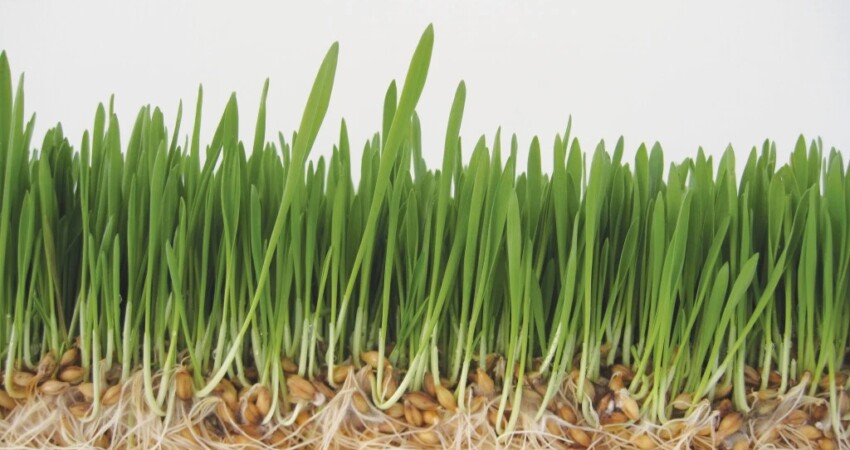

If you’re raising chickens or other livestock, you know that animal feed can get quite expensive. Growing fodder to supplement their diet is an easy endeavor and one that will keep your flock happy.
Fodder is a mat of sprouted seeds that can be used to feed a variety of livestock and small animals, including chickens. While we think of whole grains as food, they are really seeds formed by a plant to regenerate itself. Untreated whole grains need nothing more than a little moisture to try to do what they’re meant to do: grow. By giving grains the conditions necessary to sprout, they’ll do what comes naturally with very little effort on your part.
Sprouting grains into fodder requires a little bit of set up, but it’s not difficult. You’ll need some sort of shallow tray to get started. We use an upcycled storage unit with shallow sliding drawers. Check your local thrift store or rubbish bin for options — you won’t need anything fancy. You could also use: Styrofoam meat trays, Baking trays, Plastic clamshells or Seed starting trays.
The essential thing is that you are able to drill drainage holes in the trays.
One of the best reasons for sprouting grains into fodder is that it helps stretch your animal feed budget. 23 kgs of whole grain can be transformed into as much as 136 kgs of fodder simply by sprouting it. Sprouting grains increases their nutritional content and boosts protein content slightly. And while it’s great for chicken feed, this fodder works as feed for other Livestock as well.
Growing fodder
– Soak grain in a bucket of water overnight. Cover the grains by about two inches of water. How much grain to soak depends on the size of your trays and how many you’re filling. Aim for a half-inch depth for each tray. The grains have a tendency to mold if they’re deeper than that.
– Drain grains and transfer to trays. Spread evenly.
– Water each tray morning and night. If your region is really dry and the sprouting grains dry out quickly, you might need to water them during the day or experiment with using lids on the trays to help prevent evaporation.
– You’ll see roots within the first couple of days, followed by greens. The growing fodder is edible at any point, but it usually takes a week or so to have a nice solid block of fodder that you can lift out of each drawer.
 Contact Jaguza Support
Contact Jaguza Support